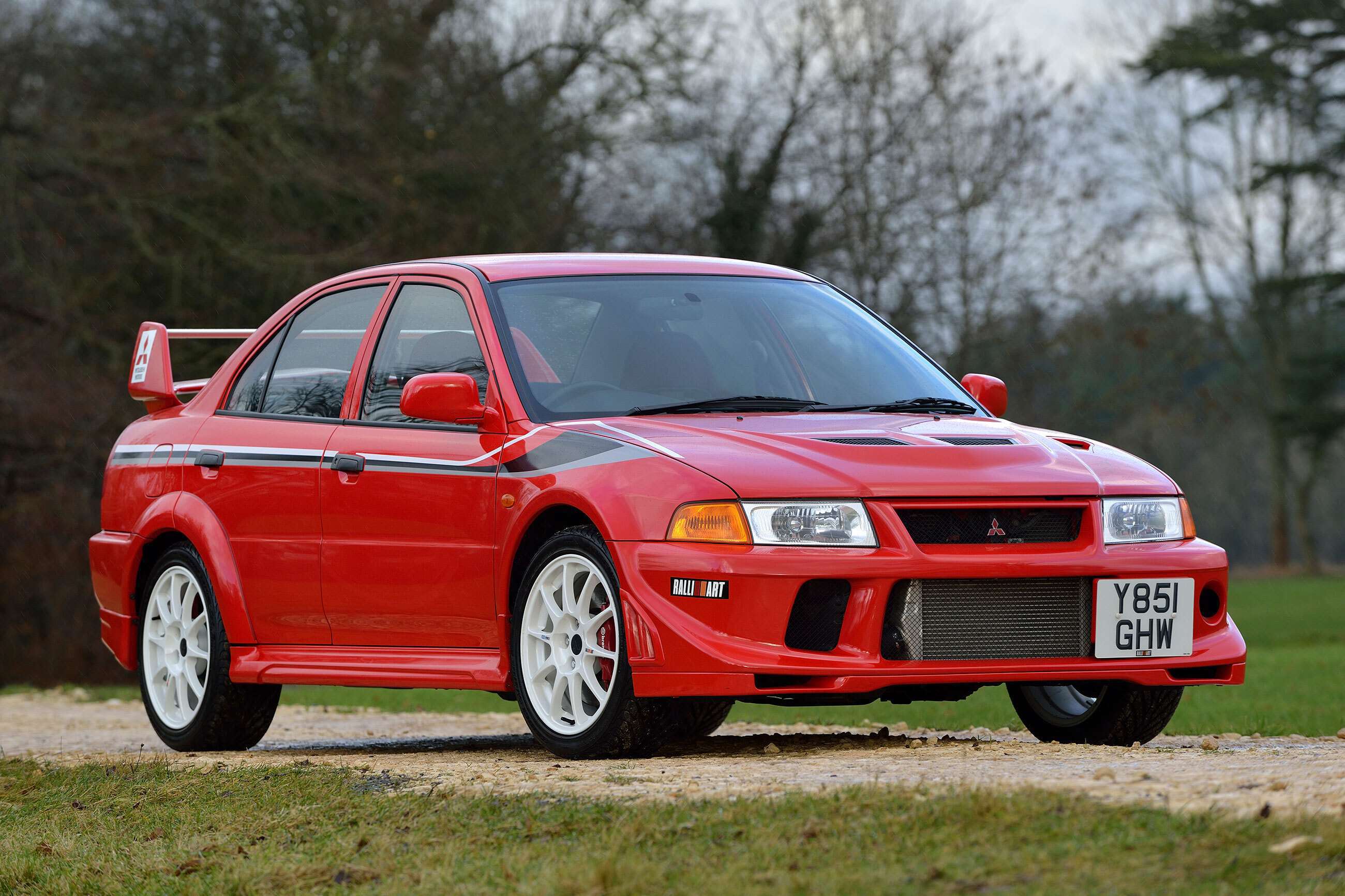The seven best Mitsubishi cars ever
In 2020, economically-challenged Mitsubishi Motors stopped the automotive industry in its tracks by making two shock announcements in quick succession. The first of these was that, after a 21-year production run (exceptionally long by modern standards), Mitsubishi would lay its popular Pajero 4x4 (Shogun in the UK) to rest in January 2021.

Although British imports of this rugged 4x4 (beloved by the UK Highways Agency patrols) were quietly withdrawn in 2019, the Pajero/Shogun remained a popular off-roader elsewhere in the world, continuing to sell steadily in Australia, Russia and many other markets.
This sorry Shogun announcement conditioned the world for bigger but more serious shock news from Japan’s sixth largest vehicle producer, with Mitsubishi’s planned withdrawal from both the UK and broader European new cars markets for the foreseeable future, and no new models being planned for Europe. This surprising news came as Mitsubishi posted losses of billions of yen (c.£1.3bn) for the first quarter of 2020.
Embroiled in the messy on-going Renault Alliance fiasco (combining the Renault, Nissan and Mitsubishi trio, with 34 per cent of the latter’s shares owned by the Alliance), Mitsubishi was struggling to find its raison d’etre, offering a diminishing range of mainly forgettable 4x4 SUVs and pick-ups in the UK and Europe, with the traditional passenger car market all but abandoned, it’s out-classed and aging Mirage hatch was the Brand’s sole none-off-road product offering. It wasn’t always thus...
Although a late arrival to both the UK and Continental European export markets compared to its rival Japanese car brands, Mitsubishi quickly made an impact with an appealing portfolio of well-engineered and reliable cars. For the UK, Mitsubishi made its high-profile debut onto this market at the 1974 Earls Court Motor Show, trading under the Colt brand name (Mitsubishi being considered ‘too Japanese’ and difficult for Brits to pronounce at the time!). It launched itself as the Colt Car Company with an initial two model range; the affordable Lancer, targeted at less-equipped and robust British rivals such as the Ford Escort, Austin Allegro and Vauxhall Viva, and the larger luxury Galant, aimed at the Ford Cortina, Morris Marina and Hillman Hunter.
Based in Watermoor, Cirencester, the Colt Car Company quickly established its UK presence with high-profile sponsorship deals of aspirational sports, such as golf and equestrian show jumping, to help build awareness and position the brand. It also built up a loyal customer following through independent, family-owned dealerships and courting the influential media through lavish press launches, including trips in its own Colt-branded company helicopter! Although never a major player in the British new car market, initially restricted by voluntary import quotas for Japanese vehicles – leading to Colt even briefly importing Australian-built Mitsubishi Galants under the Lonsdale name in the mid-1980s to get around these market restrictions – the Company soon built an enviable reputation for selling exemplary quality and reliable Colt-badged cars. Inevitably, these were eventually rebranded as Mitsubishis later in the decade to tie-in with the Japanese HQ’s global expansion strategy, supported by its gradual acquisition of the British import operations as a wholly-owned subsidiary.
During its 46 years in the UK, Mitsubishi officially imported a bewildering array of passenger saloons, hatches, coupes, MPVs, SUVs, pick-up trucks and panel vans (with a number of non ‘official’ grey-import models also finding their way onto British highways), with its new car sales peaking in the mid-2000s at around 37,500 units. In remembrance of Mitsubishi's near-50-year presense in the UK, we celebrate some of the Japanese manufacturer’s finer moments with these magnificent seven Mitsubishi models, each officially sold in Great Britain.

1. Colt Galant GTO GSR Coupe (1975)
When the then-unknown Mitsubishi first entered the competitive UK new car market in late 1974 under the Colt banner, it launched with two models; the traditional rear-wheel-drive Lancer saloon (in two- and four-door form), plus the larger D-segment Galant, available as a four-door saloon, five-door estate and two-door coupe. Though worthy, these humble models were never going to set the pulses racing of any motoring enthusiasts.
This situation soon changed in 1975, however, when Colt brought in a handful of more exciting Galant-based GTO GSRs, an aggressive-looking coupe, resembling an original Ford Mustang, and aimed squarely at the more powerful versions of the contemporary Ford Capri, Opel Manta and Japanese Toyota Celica.
Retailing at an ambitious £3,000 (£600 more than a Toyota Celica GT), the GTO GSR was powered by a lively 2.0-litre ‘Astron 80’ engine, developing a healthy 115PS (85kW). High-back bucket sports seats, an aggressive dual honeycomb grille snout, bolt-on wheel arch extensions and Mustang-inspired multi-lens tail lamps all added to the model’s purposeful intent, but the unfamiliar Colt/Mitsubishi name, plus its high price, kept GTO GSR sales very low in UK, making this car now very scarce (and sought).

2. Colt Celeste (1976)
Within just a couple of years of its launch, the first UK-market Galant was replaced by a larger, more modern model, this new saloon spawning the stylish Sapporo; a large pillarless ‘boulevard cruiser’ coupe, created primarily for the North American markets (where it was sold as a Dodge and Plymouth).
Positioned as an attention-grabbing halo model at the top of the expanding Colt range, the Sapporo was out of reach of most buyers, so the Cirencester firm also began to import a smaller, more-affordable coupe for a wider market sector, in the form of the attractive Lancer-based three-door Celeste.
Initially available with a tame 1.6-litre engine only, the Celeste was a pretty three-door hatch coupe alternative to a Ford Capri, Renault 17 or Morris Marina Coupe, aimed (dare we say) at female and ‘golf club set’ buyers.
With a mild front and rear restyle for 1978, the Celeste became a more serious driver’s car, with the addition of a 105PS (77kW) 2.0-litre motor option, plus a special edition metallic gold ‘Grand National’ edition added for 1980 to mark Colt’s headline sponsorship of this famous annual horse racing event. The rear-drive Celeste was replaced by the less-attractive front-drive Cordia in 1982.

3. Colt Lancer 2000 Turbo (1980)
Mitsubishi was ‘quick’ to follow the rubber skid marks left by Saab and Renault in the late 1970s with their influential 99 and 18 Turbo models by offering its second-generation Lancer EX saloon in turbocharged form.
Launched by Colt as an exciting, niche performance model (only available in black or white), the Lancer EX 2000 Turbo combined a clean, modern European design by the talented Italian stylist Aldo Sessano, with an intercooled 2.0-litre 160PS (118kW) engine to give genuine ‘wolf in sheep’s clothing’ performance and 124mph top speed potential.
Unlike the earlier Galant GTO GSR, the ‘go faster’ performance add-ons for the Lancer EX Turbo were more subtle, with moderately flared wheel arch extensions, front and rear spoilers and tastefully-restrained alloy wheels. This model continued Mitsubishi’s rallying heritage too with mixed success, pathing the way importantly for the later Lancer-based EVO rally weapons and performance derivatives.

4. Colt/Mitsubishi Shogun I (1982)
Following its ‘teaser’ reveal in concept form at the 1981 Tokyo Motor Show the previous October, in May 1982 Mitsubishi launched a legend with the introduction of its first Pajero 4x4 off-/on-road model, beginning an SUV legacy that lived on for almost 40 years, until production of the fourth-generation model ended in early 2021.
When the first examples of this new 4x4 landed on these shores in 1982, the UK importers had to remove two badges; the Pajero insignia being swapped for a more fitting Shogun item (the Pajero name also being changed in the Spanish-speaking world to Montero, as the former means something self-gratifying in Spanish!), with the Mitsubishi branding also removed and replaced with Colt.
During the Shogun’s formative years in the UK though, the Colt marque eventually gave way to Mitsubishi, with branding badges later changed over free-of-charge if customers asked. As the Brand’s first 4x4 off-roader passenger car model in the UK and Europe, the Shogun (Pajero) was instrumental in establishing Mitsubishi as a serious player in the growing SUV sector, creating a reputation that it subsequently enjoyed and traded on as the marque’s range of 4x4 models successfully expanded to include today’s ASX, Outlander and Eclipse (and not forgetting the best-selling L200 pick-up), each of which carry the original 1982 model’s DNA.

5. Mitsubishi 3000GT (1990)
Reviving the cult GTO name for its home Japanese market only, Mitsubishi’s 3000GT was a high-performance full-time four-wheel-drive sporting coupe, co-developed with Chrysler and also sold in the USA as the striking Dodge Stealth with its own unique (but related) coachwork.
For the UK and Europe, the 3000GT was pitted against other significant Japanese performance coupes of the era, such as the Toyota Supra, Nissan 300ZX, Mazda RX-7 and underrated Subaru SVX.
This top-line Mitsubishi image carrier was powered by an all-new twin-turbo 3.0-litre V6, developing a potent 324PS (238kW), mated to a Getrag five-speed manual gearbox. This technical tour de force enjoyed advanced active aerodynamic aids with its all-wheel-drive system boasting a front/rear torque split of 45/55 to provide superb handling and stability with performance to match, the 0-100km/h (0-62mph) sprint taking 5.5 seconds, with the revised 3000GT VR-4 version achieving the same in just 4.8 seconds!

6. Mitsubishi Lancer EVO VI (2001)
The forgettable Lancer family saloon might seem an unlikely base on which to create a hugely successful WRC-winning rally car, yet Mitsubishi managed to achieve this with its Lancer Evolution, this model taking winning rally driver legend Tommi Makinen to a fourth world rally championship title for Mitsubishi.
As a result of its huge WRC successes, Mitsubishi introduced its now-cult Lancer Evolution (a.k.a. EVO) homologation special road car series. These EVOs spanned ten generations, based on four different platforms. Frustratingly for potential UK buyers though, initially they were unable to ‘officially’ buy any of the first five EVO generations through official British Mitsubishi channels because the cars were not homologated for sale in Europe. However, in 1998, UK legislation was changed to allow small batches of vehicles to be imported under new Single Vehicle Approval (SVA) rules.
With the UK’s performance car market gathering pace in the late 1990s, rally enthusiasts were already sourcing various – and otherwise unattainable – Mitsubishi performance cars from Japan through grey importers. With the new SVA rules taking effect though, Mitsubishi Motors in the UK was suddenly able to supply EVOs with official vehicles sold with full manufacturer back-up and support.
The first nine versions of the EVO were all powered by Mitsubishi’s legendary 4G63-T four-cylinder, turbocharged engine, a motor officially available in the UK in various states of tune, ranging from 260PS (191kW) to 400PS (294kW). The higher-powered versions were tuned in-house by in the UK by Mitsubishi’s Ralliart division (which also imported a handful of the capable FTO coupes), these gaining the infamous FQ moniker when the seventh-generation EVO was launched in 2000.
On 11th July 2000 the Mitsubishi Lancer Evolution was finally officially available in the UK, with the first car registered being a Lancer EVO VII Tommi Makinen Special Edition. Sold through the specialist Ralliart division, the first batch of over 250 Mitsubishi EVOs were specially prepared for the UK market with extra corrosion protection, MPH instrumentation, additional security features, plus a myriad of extra features such as an integrated rear fog lamp and a UK owner’s manual. Priced from £32,995 for the Tommi Makinen Special Edition, all 250 sold out within weeks.

7. Mitsubishi Lancer EVO X FQ-440 MR (2015)
Due to the EVO VII’s critical and commercial success, every subsequent iteration of the rally-inspired all-wheel-drive Mitsubishi EVO was imported into the UK thereafter, culminating in the Lancer Evolution X FQ-440 MR in 2015, of which only 40 were produced and were sold out in a matter of hours.
Priced at £50,000, these 40 cars were the most expensive and most powerful official Lancer EVOs ever sold in the UK and a fitting farewell to one of the world’s most revered driving machines, and indeed the ex-Colt Mitsubishi marque being available on these shores. Sayonara Mitsubishi!
Mitsubishi
Evo VI
Lancer
Pajero
Shogun
3000GT
Road
News































































